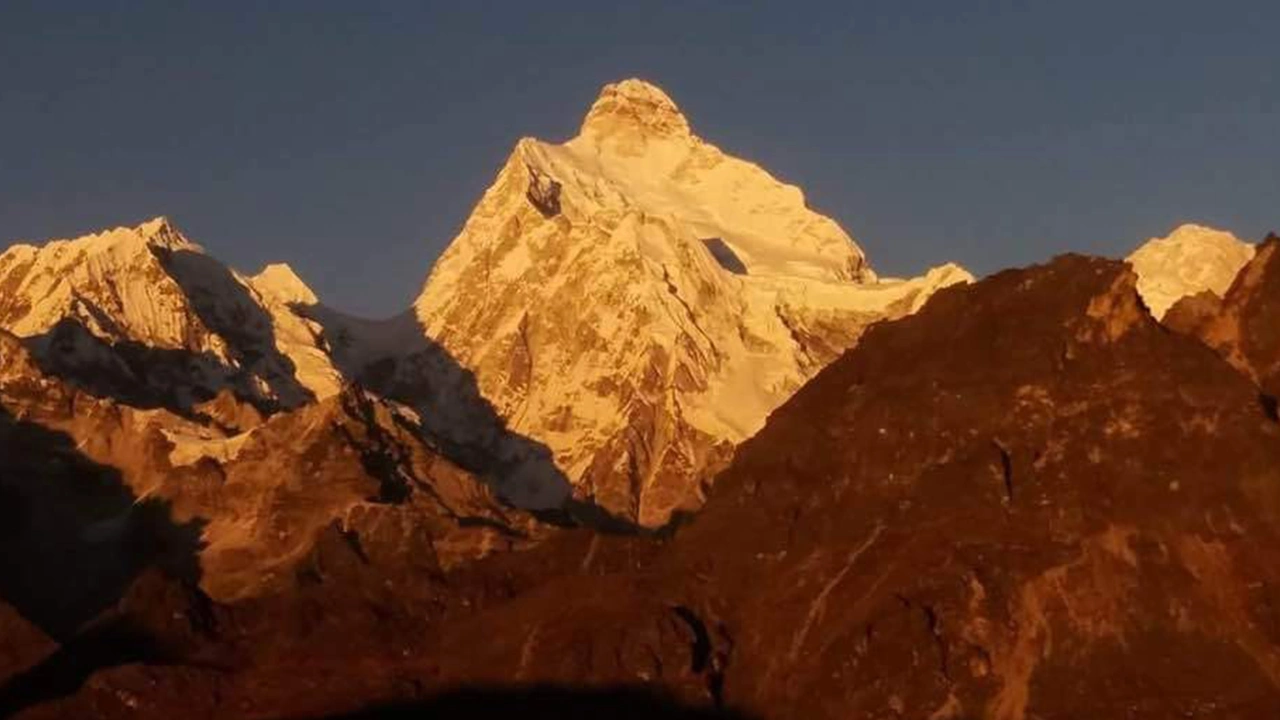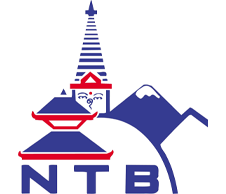Upon arrival at Tribhuvan International Airport, our representative will welcome you and transfer you to your hotel in Kathmandu. The capital city is alive with culture, historic temples, and bustling streets that provide your first taste of Nepal. Depending on your flight time, you may take a short walk around the lively Thamel district to experience local shops and cafés. In the evening, there will be a short briefing about the Kanchenjunga trek and time to check your equipment. Overnight stay at a hotel with dinner included.
Kanchenjunga East West Base Camp Trek

Overview
The Kanchenjunga East West Base Camp Trek is one of the most remote and adventurous journeys in Nepal, leading trekkers to both the North Base Camp and South Base Camp of Mount Kanchenjunga — the world’s third-highest peak (8,586 m). Unlike the popular Everest and Annapurna routes, this trail is less crowded, wild, and deeply rewarding, making it perfect for trekkers who crave untouched nature and authentic culture.
The trek begins with a scenic flight or drive to eastern Nepal, where lush rhododendron forests, terraced farmlands, and high mountain ridges create the first impressions of this adventure. The route gradually takes you through traditional Rai, Limbu, and Tibetan-influenced villages, where life has changed little for centuries. Along the way, trekkers can expect warm hospitality, organic local meals, and a rare glimpse into rural Himalayan lifestyles.
Reaching the South Base Camp (Oktang, 4,610 m) rewards trekkers with sweeping views of the Kanchenjunga massif, Rathong, Kabru, and Yalung Glacier. From there, the trail continues toward the North Base Camp (Pangpema, 5,143 m), where the close-up view of Kanchenjunga’s north face is an unforgettable highlight. Few treks in Nepal offer the chance to experience both base camps in one journey, making this trek a once-in-a-lifetime opportunity.
Accommodation along the route is mostly in basic tea houses and community-run lodges, with simple facilities. Trekkers should be prepared for long walking days (6–7 hours on average), steep ascents, and high-altitude conditions. However, the reward is unmatched: pristine valleys, alpine meadows, glacial rivers, and quiet trails where you may go hours without meeting another trekker.
Over three weeks of exploration, this trek delivers the perfect balance of natural wonders, cultural encounters, and high-altitude adventure. By the end, trekkers return with lasting memories of Kanchenjunga’s grandeur, mountain communities, and the raw beauty of Nepal’s far eastern Himalayas.
Today is set aside for a guided sightseeing tour of Kathmandu’s UNESCO World Heritage sites. You will visit Pashupatinath Temple, Boudhanath Stupa, and Swayambhunath, each reflecting Nepal’s unique blend of Hindu and Buddhist traditions. The afternoon is dedicated to trek preparations, including final gear checks and permit arrangements. This is also a good time to pick up any last-minute essentials. Overnight in Kathmandu with breakfast included.
An early morning flight takes you to Bhadrapur in Nepal’s eastern lowlands, offering sweeping views of the Himalayas en route. From here, an adventurous drive winds through lush hills, terraced farmlands, and riverside settlements. You’ll gradually ascend to Suketar, a small town perched in the hills, where the trek begins. The journey is long but rewarding, introducing you to the rural landscapes of eastern Nepal. Overnight at a lodge in Suketar.
Your trek begins with a gentle descent through subtropical forests filled with chirping birds and occasional mountain views. The trail passes through small villages where you’ll meet locals from Limbu and Rai ethnic groups. Agriculture dominates the landscape, with terraced fields of maize, millet, and cardamom. The day is relatively short, allowing you to adjust to the trekking rhythm. Overnight stay at a simple lodge in Lali Kharka.
Today’s trek features undulating terrain, with steady ascents and descents along ridge trails. The path winds through rhododendron forests and across traditional villages where warm greetings from locals are common. Expect breathtaking views of distant snow peaks and rolling green hills. The day also provides a first real sense of Kanchenjunga’s remoteness. Overnight at a lodge in Kande Bhanjyang.
Leaving Kande Bhanjyang, the trail descends steeply through dense forests before climbing again onto ridges overlooking valleys. Villages along the way showcase traditional stone houses and farming lifestyles. Expect to cross small streams and suspension bridges along the route. The day is moderately challenging, with mixed uphill and downhill paths. You’ll reach Phumphe Danda in the evening, where basic teahouse accommodations await.
The trail today is diverse, combining forested paths, suspension bridge crossings, and open terraced farmland. Cardamom plantations dominate parts of the route, and you’ll see locals tending to their crops. The cultural diversity of Yamphudin stands out, as it is home to Sherpa, Limbu, Rai, and Gurung communities. Expect lively interactions with villagers curious about trekkers. Overnight at a lodge in Yamphudin.
This is a long and demanding day as the trail ascends gradually to higher altitudes. The path follows rivers, crosses wooden bridges, and climbs through rhododendron and oak forests. Along the way, waterfalls and mossy rocks create a tranquil but challenging atmosphere. Higher up, vegetation becomes sparse as the altitude increases. You’ll spend the night at Tortong in a simple mountain lodge.
Today’s trek is a steep climb into alpine terrain. You’ll pass yak pastures and open meadows, with breathtaking views of snow-clad Rathong and Kabru peaks. The air gets thinner, requiring a steady pace and plenty of hydration. This section of the trail truly reveals the grandeur of Kanchenjunga’s southern side. Overnight at Ramche in a basic lodge.
A highlight of the trek, today’s hike leads you to Oktang viewpoint. From here, you’ll enjoy jaw-dropping views of Kanchenjunga South Face and surrounding glaciers. Colorful prayer flags flutter against the icy backdrop, creating a spiritual atmosphere. After exploring the area and taking photographs, return to Ramche for the night. This day helps with acclimatization while delivering unforgettable scenery.
A relatively short but demanding day takes you further into the Yalung Valley. The trail ascends steeply with views of icy glaciers and rocky cliffs. At base camp, the raw power of Kanchenjunga’s peaks dominates the horizon. This remote setting is perfect for photography and quiet reflection. Overnight at camp or basic lodge near Yalung Ri Base Camp.
Leaving Yalung Ri Base Camp, you begin descending through alpine meadows and rocky terrain. The return route gives fresh perspectives of the glaciers and distant peaks. Descending to Tsheram, you’ll feel the air get warmer and the greenery slowly return. This descent helps the body adjust after spending days at higher elevations. The village of Tsheram offers a comfortable rest stop with basic lodges and hot meals.
This is one of the more challenging days of the trek, as you cross the Mirgin La Pass. The climb is steep and steady, but the reward is unmatched views of Kanchenjunga, Makalu, and even Everest on clear days. The terrain is rocky and barren, reminding you of the wild isolation of this region. Careful pacing is needed to manage the altitude. Descend gently to Selele, where a simple lodge provides shelter for the night.
From Selele, descend steadily into lush forests of pine and rhododendron. The contrast between barren highlands and forested valleys is dramatic. Ghunsa is a beautiful Tibetan village with traditional wooden houses and carved mani walls. You’ll find monasteries here where prayer flags add a splash of color against the mountain backdrop. Overnight at a welcoming lodge with hearty Sherpa meals.
The trail follows the Ghunsa Khola through rugged alpine landscapes. Snowy peaks including Jannu (Kumbhakarna) dominate the horizon. This section of the trek requires steady pacing, as you’re gaining altitude again. Along the way, you may encounter blue sheep grazing on the slopes. Kambachen is a high-altitude settlement with basic but cozy lodges.
A shorter but important acclimatization day as you continue climbing toward the north base camp. The landscape becomes stark and barren, with moraine trails and wide views of the valley. Lhonak is perched near a glacier and offers unforgettable views of snow peaks. With limited facilities, accommodations here are very simple. Rest well and hydrate to prepare for the base camp push.
Today you reach the Kanchenjunga North Base Camp, known as Pang Pema. The trail climbs gradually along rocky terrain and glacial ridges. Reaching Pang Pema is a highlight of the trek, offering incredible views of Kanchenjunga’s massive north face. The thin air makes the trek challenging, so slow pacing is essential. Overnight at camp or basic lodge with panoramic Himalayan views.
Spend the morning exploring around Pang Pema, taking in the dramatic scenery of glaciers and towering peaks. This is an excellent opportunity for photography and quiet reflection in one of the most remote places on earth. After enjoying the base camp, begin descending back toward Kambachen. The trail feels easier on the way down, but caution is needed on rocky sections. Overnight at lodge in Kambachen.
Continue your descent along the Ghunsa Khola valley. With lower altitude, you’ll notice the air becoming thicker and breathing easier. Ghunsa provides another chance to interact with locals and enjoy Tibetan-style hospitality. It’s a good day to rest your legs and enjoy a more relaxed pace. Overnight at lodge.
A long descent begins today as you leave the alpine regions and head toward lower valleys. The trail passes waterfalls, pine forests, and suspension bridges. Amjilosa is a small hamlet with very limited facilities, but the surrounding scenery is stunning. You may also spot wild animals such as langurs or Himalayan goats. Overnight at a rustic lodge.
The path continues downhill, following the Ghunsa River. Warmer temperatures and lush vegetation make the atmosphere refreshing. Villages along the route reflect a mix of Limbu and Sherpa culture. You’ll see terraced fields and hear the sound of rushing rivers. Overnight at a lodge in Sakathum.
Today’s trek descends further into subtropical forests and agricultural land. The trail passes cardamom plantations, which are a key livelihood for locals. Chirwa is a large Limbu village with warm hospitality and cultural traditions. Compared to the high mountains, the climate here feels mild and pleasant. Overnight at lodge in Chirwa.
Leaving Chirwa, the trail climbs gradually along ridges and valleys. The ascent is steady, offering final glimpses of the Kanchenjunga region. Taplejung, the district headquarters, feels lively after weeks in remote areas. The town has shops, markets, and guesthouses. Overnight at lodge with the comfort of better facilities.
A long drive retraces winding roads through hills and valleys toward the lowlands of Bhadrapur. Along the way, you’ll pass villages, rivers, and tea plantations typical of eastern Nepal. This marks the end of the trekking portion, allowing you to reflect on your journey. The altitude change is significant, bringing you back to the subtropical plains. Overnight at hotel in Bhadrapur.
Take a short flight back to Kathmandu, with another chance to enjoy aerial views of the Himalayas. After weeks in the mountains, the capital feels lively and energetic. Spend the afternoon shopping for souvenirs or visiting favorite spots in the city. In the evening, enjoy a farewell dinner to celebrate your achievement. Overnight at hotel in Kathmandu.
After breakfast, you’ll be transferred to Tribhuvan International Airport for your international departure. This concludes your incredible Kanchenjunga Circuit journey. The trek leaves you with unforgettable memories of glaciers, high passes, and unique Himalayan culture. We bid you farewell with hopes to see you again in Nepal. Safe travels!
Cost Includes
- Professional trekking guide and support staff with experience in remote Himalayan trails.
- Accommodation in tea houses and local lodges throughout the trek.
- Daily meals (breakfast, lunch, and dinner) during the trekking days.
- All necessary trekking permits, including Kanchenjunga Conservation Area Permit (KCAP) and Restricted Area Permit.
- Airport transfers in Kathmandu (arrival and departure).
- Transportation to and from the trailhead (domestic flights/road transport as per itinerary).
- Porters for carrying luggage (weight limit applied).
- Emergency support and first aid kit during the trek.
- Pre-trek briefing with detailed information on routes, culture, and safety.
Cost Excludes
- International airfare to and from Nepal.
- Nepal visa fees on arrival.
- Travel insurance (mandatory for high-altitude trekking with medical evacuation).
- Personal expenses such as snacks, hot showers, Wi-Fi, laundry, and bottled drinks.
- Trekking gear and equipment (sleeping bags, down jackets, trekking poles, boots).
- Tips for guides and porters (customary but not included).
- Optional activities or side trips not mentioned in the itinerary.
FAQs
This trek is considered challenging due to its length, remoteness, and high-altitude sections. Daily trekking averages 6–7 hours, with steep ascents and rugged terrain. Prior trekking experience and good physical fitness are strongly recommended.
The Kanchenjunga East West Base Camp Trek usually takes around 22–27 days, depending on the route and acclimatization days. It includes visits to both the South Base Camp (Oktang, 4,610 m) and North Base Camp (Pangpema, 5,143 m).
The best seasons are spring (March–May) and autumn (September–November). During these times, trekkers enjoy clear skies, stable weather, and excellent visibility of Mount Kanchenjunga and surrounding peaks.
Trekkers need:
- Kanchenjunga Restricted Area Permit
- Kanchenjunga Conservation Area Permit (KCAP)
- TIMS card (Trekkers’ Information Management System)
- Since it’s a restricted area, a licensed guide is mandatory, and trekkers must be in a group of at least two people.
Accommodation is in tea houses and local lodges, with basic facilities such as shared rooms, simple beds, and local meals. In some remote sections, trekkers may stay in community-run guesthouses or homestays. Facilities are modest compared to Everest or Annapurna routes.
Yes, previous high-altitude trekking experience is highly recommended. The trek’s length, rugged terrain, and remote location make it unsuitable for beginners. However, with proper preparation and a guide, experienced trekkers find it rewarding.
Key highlights include:
- Exploring both North and South Base Camps of Mount Kanchenjunga
- Views of the Kanchenjunga massif, Rathong, Kabru, and Yalung Glacier
- Remote and uncrowded trails
- Authentic culture of Rai, Limbu, and Tibetan communities
- Untouched valleys, alpine meadows, and glacial rivers
Yes, since the trek reaches above 5,100 meters, altitude sickness is a risk. Proper acclimatization days are built into the itinerary, and guides monitor trekkers closely. Staying hydrated, ascending gradually, and avoiding overexertion are crucial.
The trek usually starts from Taplejung in eastern Nepal. Trekkers can reach there via a domestic flight from Kathmandu to Bhadrapur, followed by a drive to Taplejung. Alternatively, an overland journey by bus or jeep is possible.
Unlike popular routes like Everest Base Camp or Annapurna Circuit, this trek offers a wilder, less commercialized experience. Trekkers explore untouched landscapes, meet welcoming mountain communities, and visit both base camps of Mount Kanchenjunga — something no other trek in Nepal offers in one journey.
Kanchenjunga East West Base Camp Trek
Trekking & Hiking Adventure


